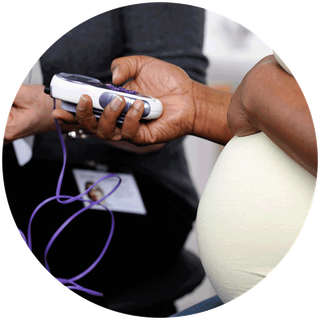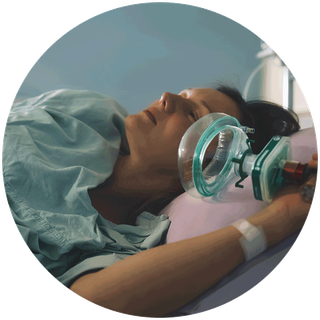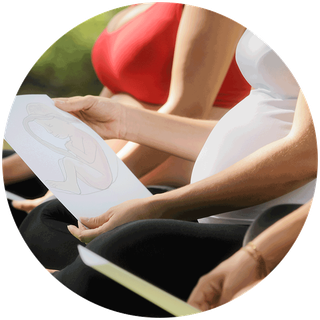Pain relief and medication during labour
There are lots of effective ways for managing pain during childbirth.
Discuss your thoughts with your midwife and doctor, then write your preferences in your birth plan. Remember, you can change your mind on the day.
TENS machine
A TENS machine delivers small amounts of electrical currents through pads on your back. It's believed to encourage the body to produce more of its own natural painkillers (endorphins).
If you want to use a TENS machine in labour:
- you may need to hire or buy your own machine
- it's drug-free and you're in control
- it might help with early labour, but not the later stages

Epidural
An epidural is a local anaesthetic that numbs the nerves that tell your brain you're in pain. An epidural is given as an injection into the space outside your spine. Your baby's heart will be monitored throughout.
An epidural:
- can work well during a difficult labour
- is unlikely to make you feel sick
- needs to be given by an anaesthetist, so is not available everywhere
- could slow down your labour and you may need further intervention, such as a forceps delivery
- does not always work – around 1 in 8 women who have an epidural also need other types of pain relief
There are some side effects of epidurals.

Gas and air (Entonox)
This involves breathing in a mixture of oxygen and nitrous oxide gas through a face mask or mouthpiece.
Gas and air:
- works quickly (within 15 to 20 seconds)
- may not take the pain away completely
Gas and air may make you feel lightheaded, sick, or sleepy - but this will ease off once you stop using it. There are no harmful side effects for you or your baby.

Pethidine
If you have pethidine in labour, it’s given as an injection into your thigh or bottom.
Pethidine:
- can help you relax for around 2 to 4 hours
- takes about 20 minutes to work
- is not suitable for late stages of labour as the drugs can affect the baby's breathing and feeding
Pethidine can make you feel woozy, sick and forgetful.

Self-help
There are things you can try to help you feel more prepared and in control in labour. Learning about labour and what is going to happen can help – ask your midwife what to expect and try antenatal classes to get more information.
Practicing relaxation and breathing techniques can be a way to stay calm during pregnancy and manage the pain during labour. Moving around while giving birth can also help, try walking, rocking and swaying, and different birthing positions, like kneeling and squatting.
Self-help techniques can mean that you feel more in control, however they may not work for everyone.

Alternative methods
Some women choose complementary treatments such as acupuncture, aromatherapy and homoeopathy. Bear in mind that there is no strong evidence that alternative methods work.
Talk to your doctor or midwife if you're planning to give birth at a hospital or midwifery unit and would like a therapist to be with you in labour.
Discuss your ideas with your midwife and doctor, then write your preferences in your birth plan. Remember, you can change your mind on the day.

Water birth
This is where you give birth in a special pool kept at a comfortable temperature, but not above 37.5C. The warm water can help you relax, it feels soothing and it's easier to move around.
Many hospitals and birth centres have birthing pools, you can also hire them for home births.
If you choose to have a water birth:
- try not to get into the pool too early, as it can slow down labour
- you will need to leave the pool and get medical help if there are complications

